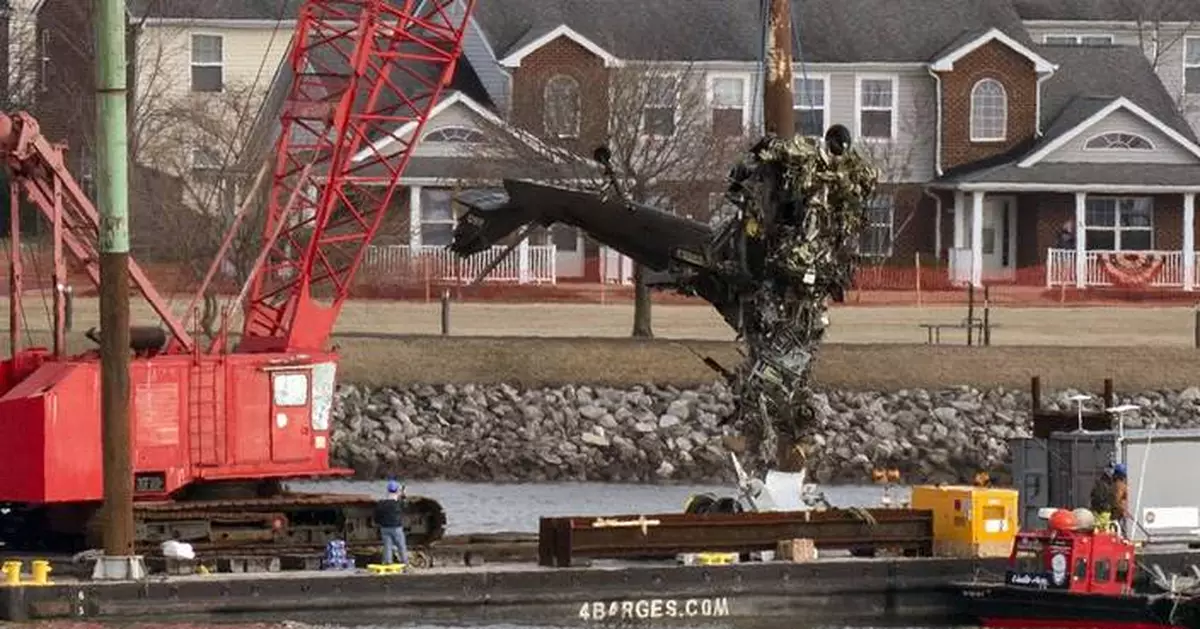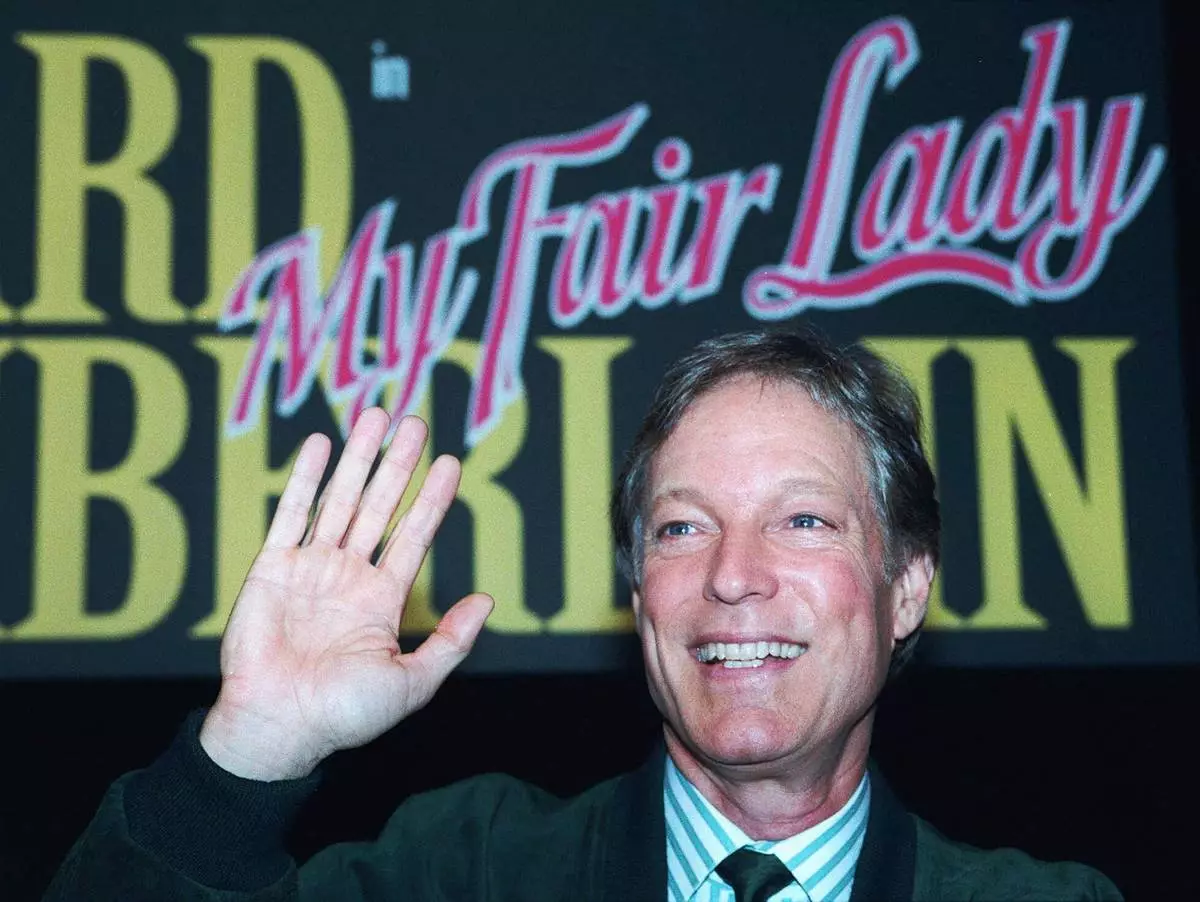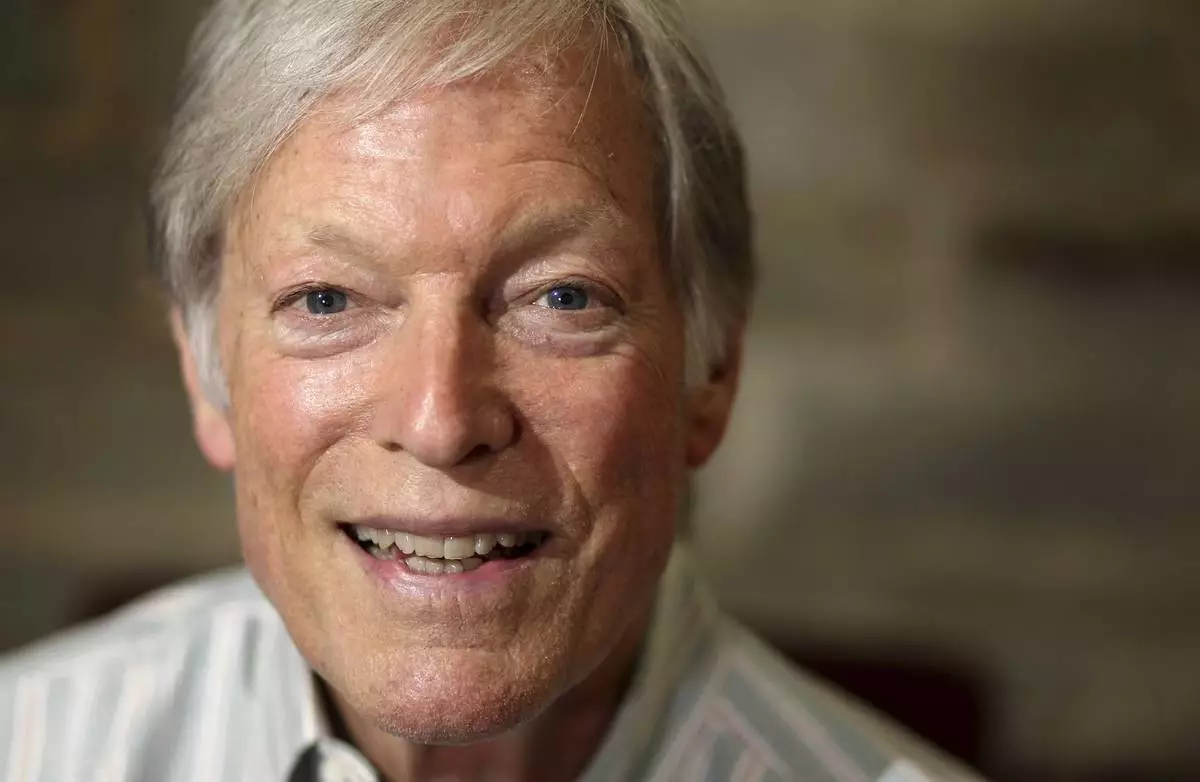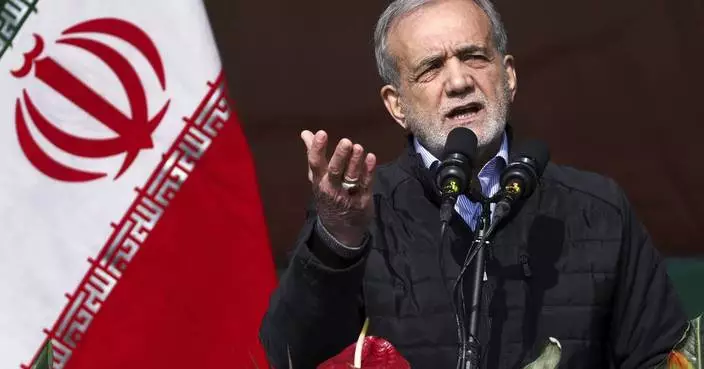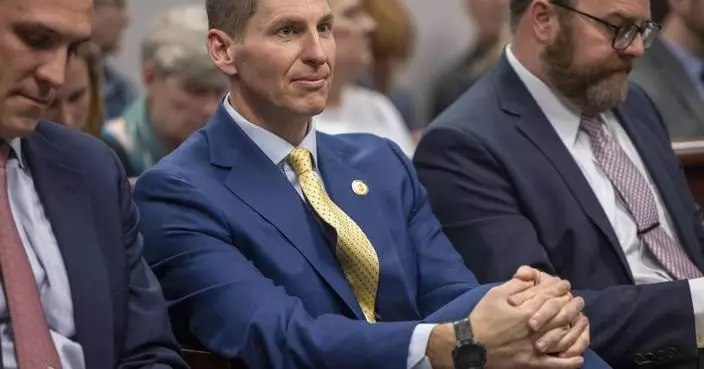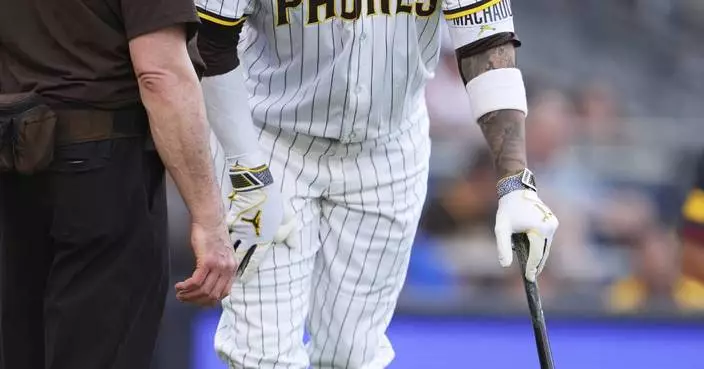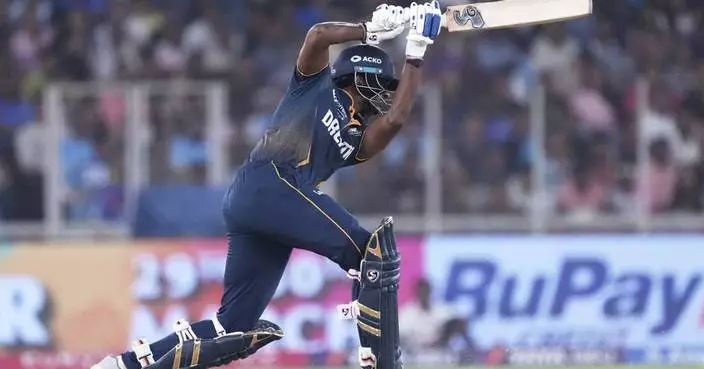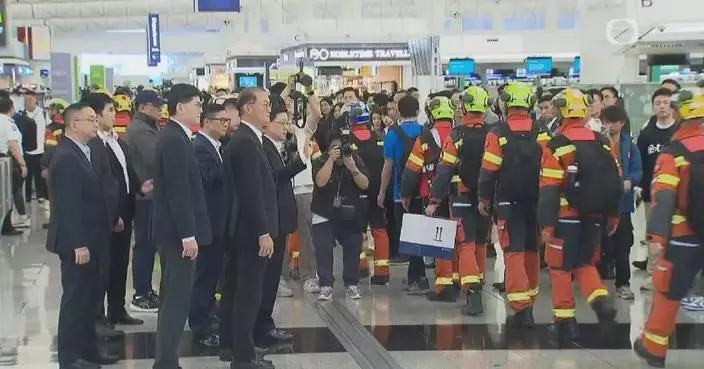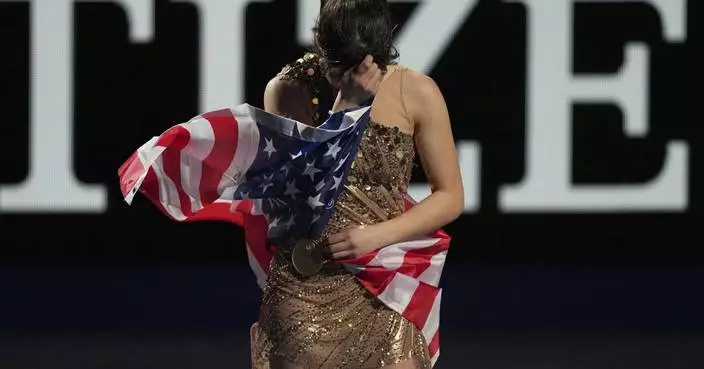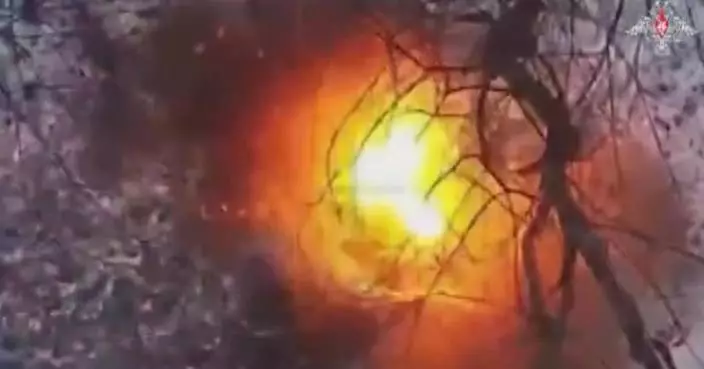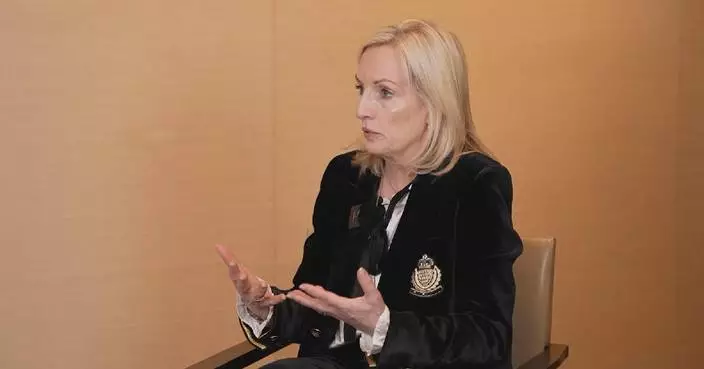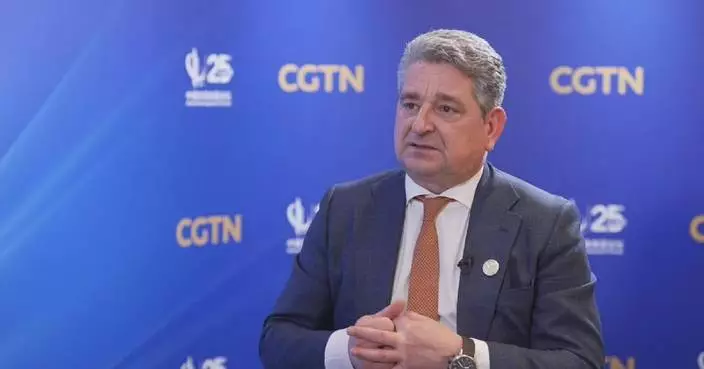Someone should have spotted the alarming number of near misses in the skies over the nation's capital before the fatal midair collision that killed 67 people in January, and reviewing the data now could prevent future crashes, according to the head of the agency investigating the crash.
National Transportation Safety Board Chairwoman Jennifer Homendy emphasized to Congress Wednesday that the Federal Aviation Administration had data going back to 2011 showing that collision alarms were sounding inside cockpits at least once a month because of how close the planes were getting to helicopters. But the FAA didn't act, she said.
“All this data is being collected by FAA from operators, from others, from voluntary reporting systems. Where is that data going to trend potential accidents and incidents in the future?” Homendy said during a hearing on her agency's budget. “The next accident is in the data right now. And what are we doing to figure out what that is?”
The Senate is planning another hearing Thursday to delve deeper into what the NTSB has found so far about the Jan. 29 midair collision between an American Airlines passenger jet and an Army Black Hawk helicopter near Washington, D.C., Ronald Reagan National Airport. Homendy and the leaders of the FAA and Army's aviation division will all testify.
Former NTSB Chairman Jim Hall said the FAA clearly should have been doing more with the information it has on hand from airlines, pilots and air traffic controllers to spot safety threats. The crash investigation will likely determine why that didn't happen effectively.
“The question remains whether it was politics or oversight that permitted that situation at Washington, D.C., to continue as long as it did and take the lives of those people that were tragically taken in that accident,” Hall said.
Both Homendy and Transportation Secretary Sean Duffy said earlier this month when NTSB first disclosed the shocking statistics that they were angry that the FAA didn't recognize the dangers before this crash after 85 near misses in the past three years when aircraft flew within a few hundred feet (meters) of each other.
The FAA promptly launched a review of all its data after the NTSB briefing to try to identify any similar safety threats, particularly in eight cities with heavy helicopter traffic. The FAA said Wednesday that analysis continues.
That review — aided by artificial intelligence and machine learning — is focused on airports in Boston, New York, Baltimore-Washington, Detroit, Chicago, Dallas, Houston and Los Angeles and the heavy helicopter traffic off the Gulf Coast. The FAA hasn't said whether it has found anything yet, but the agency promised it “will have corrective action plans for any risks that are identified.”
In the meantime, the FAA quickly adopted the NTSB's recommendation to permanently close off a particular helicopter route near Reagan anytime planes are taking off or landing on the airport's runway 33 that the jetliner was approaching in January when the collision happened. If a helicopter does need to use that route for an urgent reason, no planes will be allowed to take off or land. That should ensure that planes and helicopters are no longer sharing the same airspace near the airport, officials said.
“The FAA will continue to closely support the NTSB-led investigation and take action as necessary to ensure public safety,” the agency said in a statement.
Homendy declined Wednesday to address President Donald Trump's comments right after the crash suggesting that diversity and inclusion policies at the FAA may have contributed to it because the NTSB investigation isn't complete. A final report identifying the cause isn't expected for more than year. Trump also faulted the helicopter for flying too high and later suggested that an “obsolete” air traffic control system was the problem.
New Jersey Democrat Rep. Bonnie Watson Coleman said it is important to refute those diversity comments now because nothing has been found so far to support them, and she doesn't want the public to get the idea that diversity is the problem.
“On the contrary, loyalty and sycophants seems to be the order of the day, and it’s definitely negatively impacting this federal government doing its job,” Watson Coleman said during the hearing.
Federal officials have been raising concerns about an overtaxed and understaffed air traffic control system for years, especially after a series of close calls at airports.
The NTSB previously said the helicopter may have had inaccurate altitude readings in the moments before the crash, and the crew may not have heard key instructions from air traffic controllers. The helicopter was at 278 feet (85 meters) at the time of the collision, which would put it above its 200-foot (61-meter) limit for that location.
The collision was the deadliest plane crash in the U.S. since 2001, when a jet slammed into a New York City neighborhood just after takeoff, killing all 260 people on board and five more on the ground.
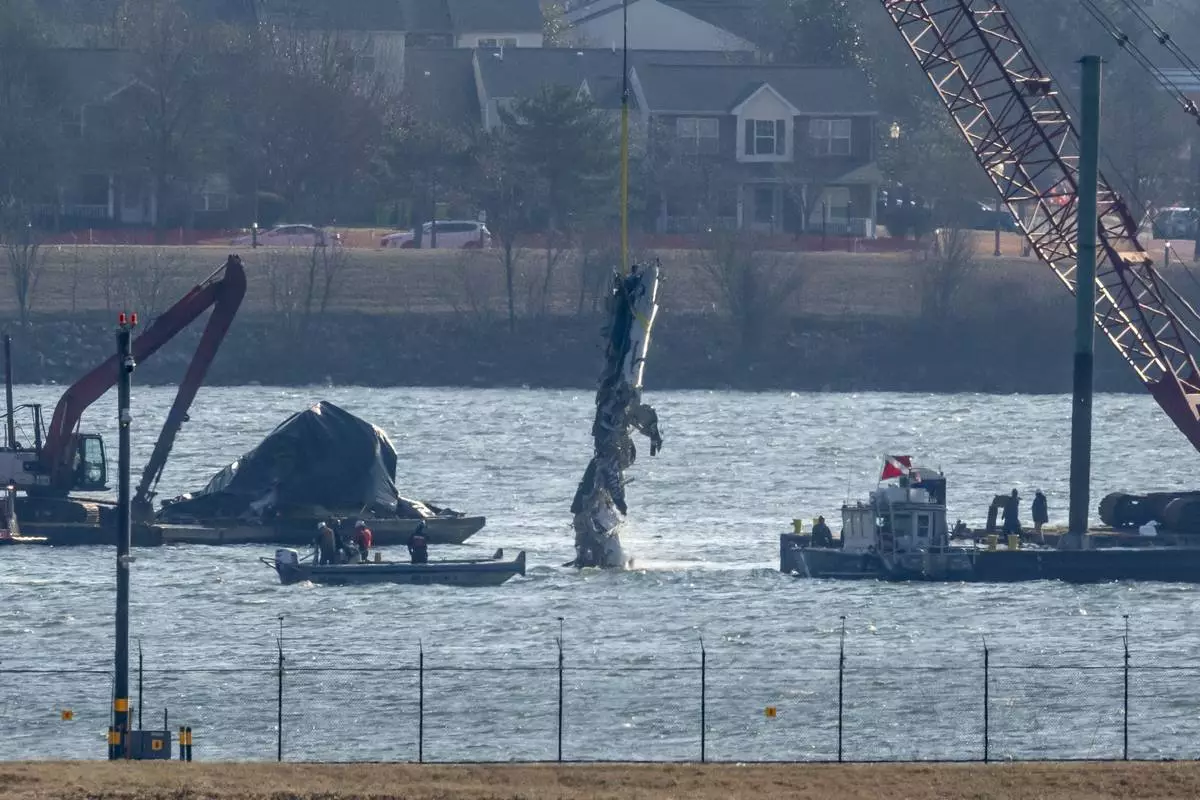
FILE - A piece of wreckage is lifted from the water onto a salvage vessel near the site in the Potomac River of a mid-air collision between an American Airlines jet and a Black Hawk helicopter, at Ronald Reagan Washington National Airport, Feb. 4, 2025, in Arlington, Va. (AP Photo/Ben Curtis, File)
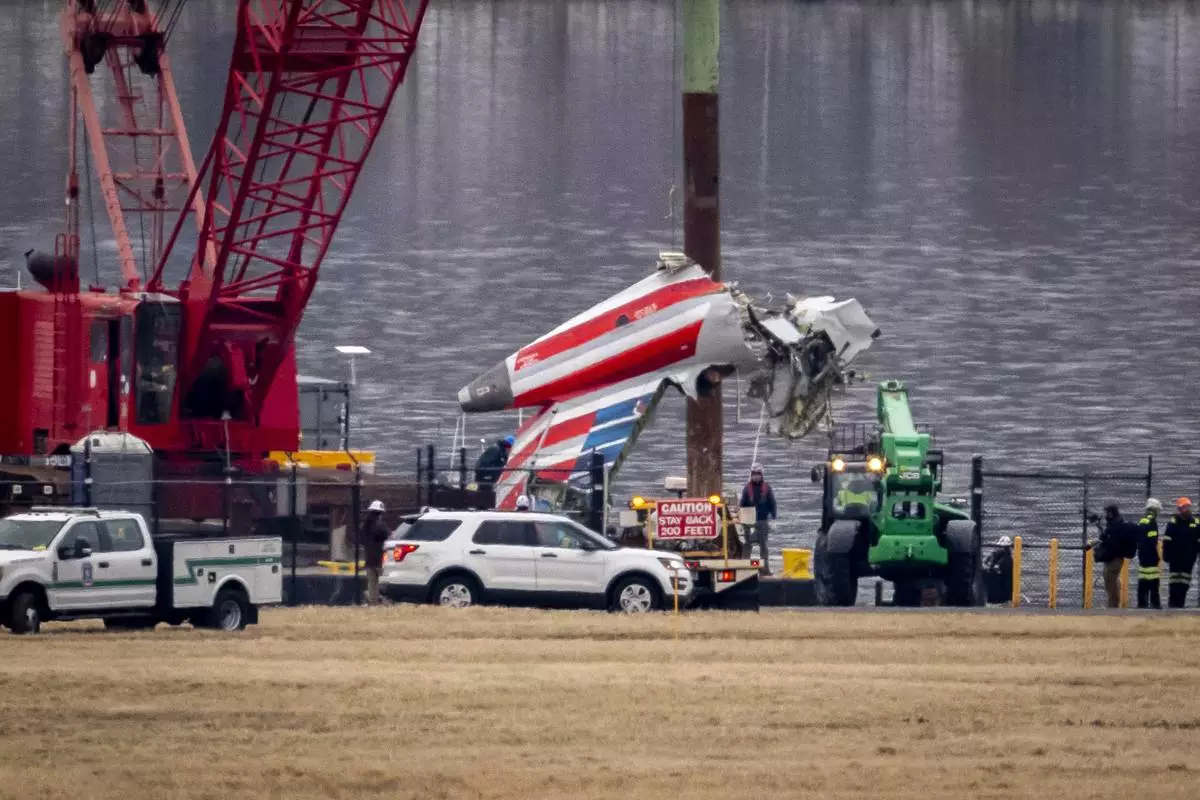
FILE - A crane offloads a piece of wreckage from a salvage vessel onto a flatbed truck, near the wreckage site in the Potomac River of a mid-air collision between an American Airlines jet and a Black Hawk helicopter, at Ronald Reagan Washington National Airport, Feb. 5, 2025, in Arlington, Va. (AP Photo/Ben Curtis, File)
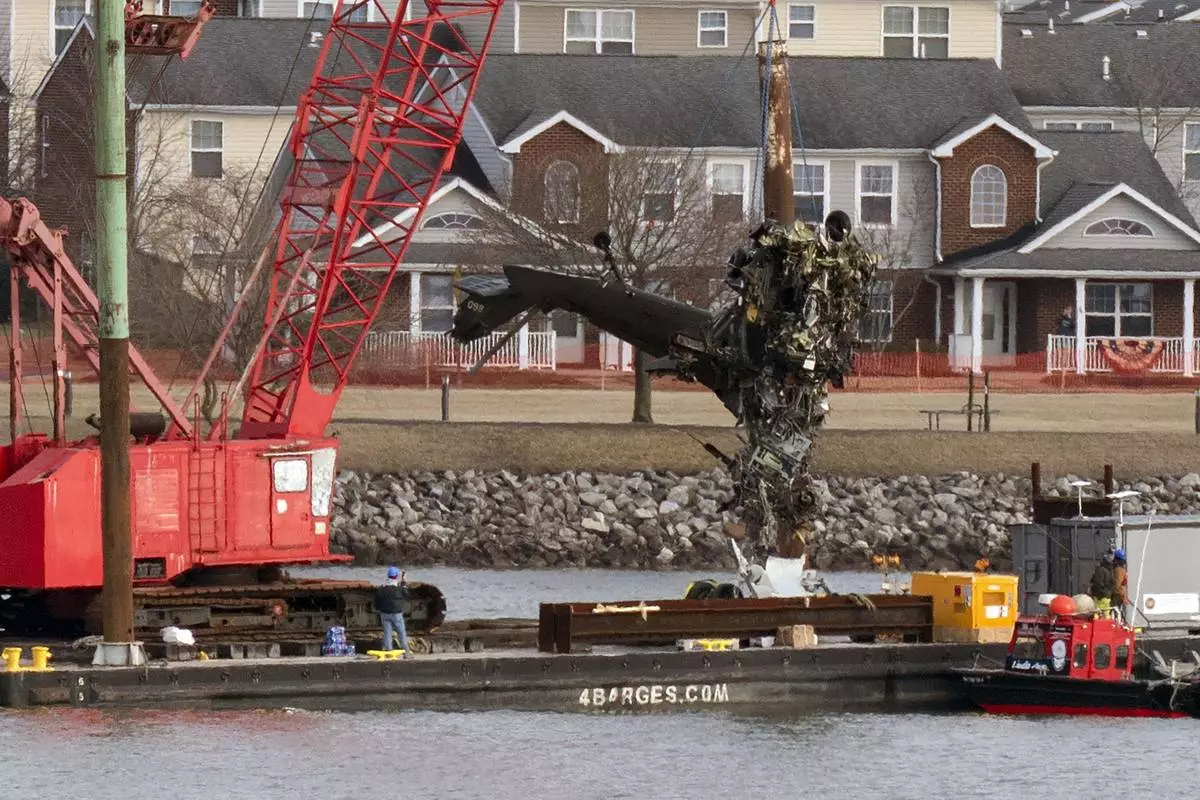
FILE - Rescue and salvage crews pull up a part of a Army Black Hawk helicopter that collided midair with an American Airlines jet, at a wreckage site in the Potomac River from Ronald Reagan Washington National Airport, Feb. 6, 2025, in Arlington, Va. (AP Photo/Jose Luis Magana, File)


